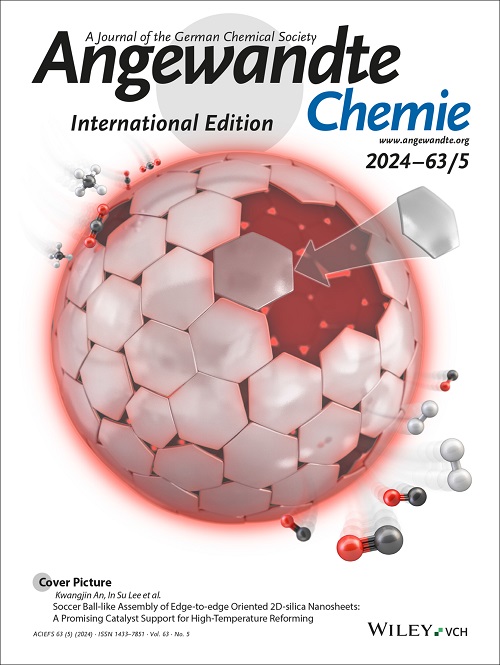Regiospecific Halogenation Modulates Molecular Dipoles in Self‐Assembled Monolayers for High‐Performance Organic Solar Cells
IF 16.1
1区 化学
Q1 CHEMISTRY, MULTIDISCIPLINARY
引用次数: 0
Abstract
Halogenated carbazole‐derived self‐assembled monolayers (SAM) are promising hole‐extraction materials in conventional organic solar cells (OSC). While halogenation helps optimize the molecular dipole, intermolecular interactions, and energetics of SAM, the highly polarizable carbon‐halogen bonds can be reactive and prone to photocleavage depending on their regiochemistry. Herein, we study the regiospecific properties, including the intrinsic stability, electrostatic potential distribution, and changes in molecular dipole of the brominated SAM molecules by brominating a helical 7H‐dibenzo[c,g]carbazole‐based SAM (CbzNaph) featuring stronger dipole. Additionally, a correlation between the intrinsic molecular stability and the derived SAM surface stability is established to determine the performance and stability of the OSCs. Notably, the bromination at the chemically inert sites of 7H‐dibenzo[c,g]carbazole (JJ26) helps maximize molecular dipole while maintaining superior intrinsic stability. Together with dense assembly promoted by the synergistically enhanced intermolecular interactions and crystallinity, JJ26 can efficiently modulate the work function of ITO and enhance the stability of SAM under external stress. Consequently, the JJ26 derived OSC shows significantly improved performance, achieving an efficiency of 19.35% along with notably enhanced stability. This work shows that the precise modulation of regio‐chemistry of SAM molecules is critical for improving their quality and derived device performance.求助全文
约1分钟内获得全文
求助全文
来源期刊
CiteScore
26.60
自引率
6.60%
发文量
3549
审稿时长
1.5 months
期刊介绍:
Angewandte Chemie, a journal of the German Chemical Society (GDCh), maintains a leading position among scholarly journals in general chemistry with an impressive Impact Factor of 16.6 (2022 Journal Citation Reports, Clarivate, 2023). Published weekly in a reader-friendly format, it features new articles almost every day. Established in 1887, Angewandte Chemie is a prominent chemistry journal, offering a dynamic blend of Review-type articles, Highlights, Communications, and Research Articles on a weekly basis, making it unique in the field.

 求助内容:
求助内容: 应助结果提醒方式:
应助结果提醒方式:


